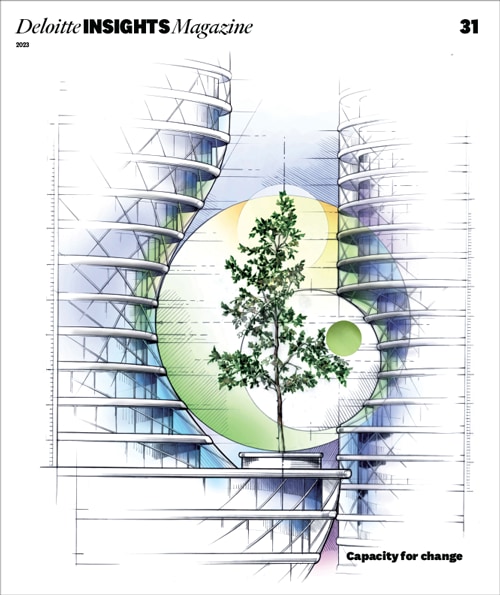Building out agile processes
Agility and flexibility are potential game changers. Flexibility of design could be used to standardize product-specific parts, allowing a standardized part to be used across products that would require minimal customization. For example, Tesla uses a number of chips in its vehicles for various control and infotainment systems, and its self-driving software. During the ongoing semiconductor shortage, Tesla swiftly changed to new microcontrollers, while simultaneously developing firmware for new chips produced by new suppliers.17
Mitigating transportation challenges
The persistent labor shortage in manufacturing, which has been exacerbated by the pandemic, has contributed to port delays, slower warehouse processing, and a truck driver shortage. As one executive explained, no matter how reliable your supplier, a labor shortage at a port can still cause a shipping delay. To address this disruption, building redundancy or resilience is needed. One company shared that it is looking at diversifying supply routes on the West Coast, possibly adding a Canadian port.
Developing resiliency
To build resiliency, in some cases manufacturers are actively partnering with other manufacturers or are investing in their suppliers to support building more production capacity. Executives interviewed described a continuum of collaboration ranging from buying capacity in advance from suppliers to actually taking equity stakes in certain critical suppliers.
There have been several examples in which industrial manufacturers are expanding their activities into adjacent areas. Our study highlights that Tier 1/Tier 2 suppliers are likely to coinvest or partner with other Tier 1/Tier 2 suppliers in emerging technologies to develop new capabilities and advance through logistics and transportation challenges. For instance, the recent acquisition of Pleatco LLC by Pentair Plc allows Pentair to expand its presence through existing distribution channels, and also to expand in the aftermarket filtration space. In addition, including complementary air filtration products into Pentair’s portfolio should serve the needs of existing industrial customers.18
In other cases, investment is focused on fostering more competition in a given market, ultimately to build more choice among existing producers. These additional investments could clearly have an impact on the industry’s cost structure, but that reduction in margin could be worth the resilience ultimately provided through developing a deeper market with more producers.
The road ahead: Optimizing for agility considerations
As manufacturing executives solve the current supply chain optimization problem, they are leveraging four familiar mitigation strategies to balance resilience with efficiency. But they are also wielding new skill sets and tools to manage the tougher constraints of rising costs, labor shortages, and logistics bottlenecks to achieve agility.
Strengthening existing supplier relationships to increase resilience:
- Work closely with suppliers to help them apply metrics to their Tier 2, 3, 4 suppliers
- Agree on mutually beneficial KPIs so that all parties know what to expect from one another
- Help suppliers maintain data on their suppliers’ throughput to boost transparency and assurance
- Train newer employees on relationship management
Engaging with multiple suppliers to balance efficiency and resilience:
- Correctly calculate the benefits of engaging multiple suppliers with the costs of lower margins and reduced control
- Use dual sourcing to achieve some cost control where possible, evaluating investing in development of additional suppliers in a niche market
- Have scenarios in place and alternative suppliers preapproved, conducting practice drills to make contingency plans more effective
- Locate additional production or alternate suppliers close to markets to reduce transportation costs and exposure to shipping delays
Employing digital solutions to boost efficiency and resilience:
- Implement warehouse automation in response to workforce shortages
- Move to digital solutions that increase visibility beyond Tier 2 suppliers
- Boost collaboration by initiating high-level information-sharing between all parties with the help of easy-to-use technologies
- Track potential sources of logistical disruption such as restricted routes and workforce shortages
Manufacturing executives are acutely aware of causes for both internal and external disruption and are taking steps to build redundancy into supply chains to assure business continuity. Though these efforts may lower margins, they can increase agility, reflecting the new balance that manufacturers are achieving between efficiency and resilience.















